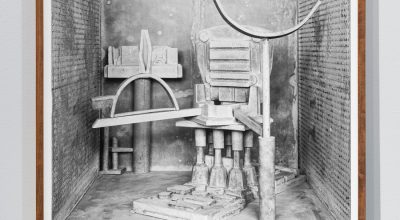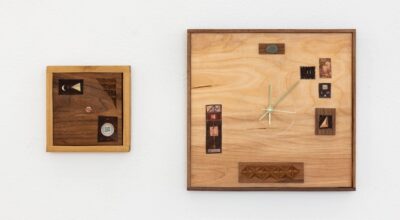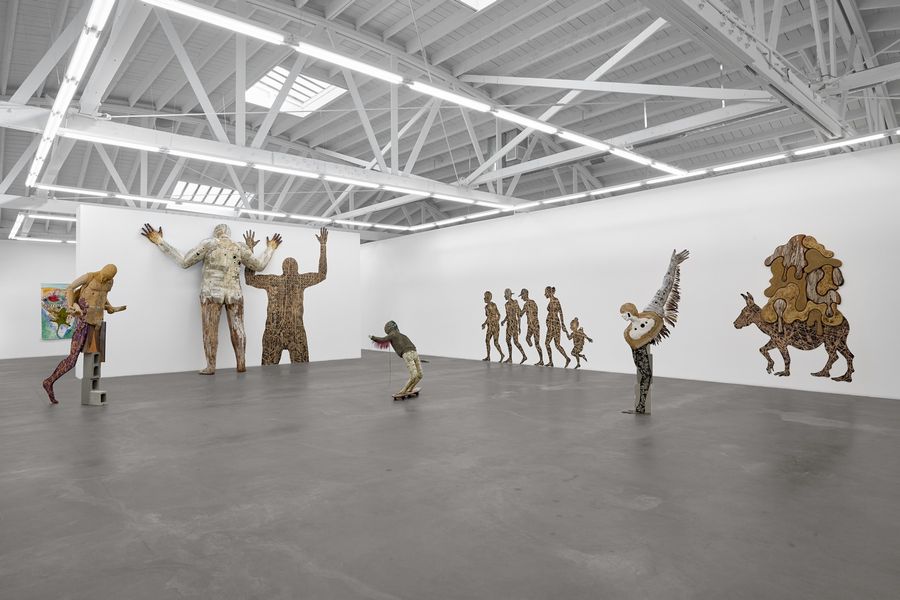
HECTOR DIONICIO MENDOZA: BUSCANDO FUTURO
Hector Dionicio Mendoza’s work materializes oral histories, ancient wisdom, familial parables, and personal and communal experiences to engage the many myths and realities of migration. Combining an array of sculptural forms and materials such as assemblage, casting, and hand-sculpting techniques, as well as found, salvaged, and industrial materials, his works are informed by his own lived experiences and the intricate dynamics of the U.S./Mexico border.
As an artist, curator, and educator based in the agricultural community of the Salinas Valley in California, Dionicio Mendoza (b.1969, Uruapan, Michoacan, MX) embraces Latinx/e futurism while exploring themes of migration and the environment, spirituality, as well as the geographies of place, memory, identity, and the visualization of immigrant stories that expand upon a new latinidad.
As a storytelling device, Mendoza’s consideration of materials is not only linked to the formation of his sculptures but is also an embodiment of their story and journey, and a prescription for healing. Inspired by ethnobotany and memories of his grandfather, a fifth-generation curandero, or shaman-healer, Mendoza infuses his materials with the very themes and stories expressed in his artworks.

His choice of materials reflects a deep connection to place, employing earth, local flora, and eucalyptus trees, as well as materials tied to labor such as corrugated cardboard, cinderblocks, and plywood.
Additionally, he incorporates everyday found objects including plastic bottles and recycled clothing, alongside his own blend of ethnic bread inspired by global flatbreads made for travel, spanning from the tortilla to pita, naan, matzo, and other yeast-less varieties.Principio del formulario
Mendoza manages a poetic flux between the often ignored familiar and the awe-inspiring mythical with his ability to evoke weight, emotion, struggle, and hope to elicit wonder and empathy.
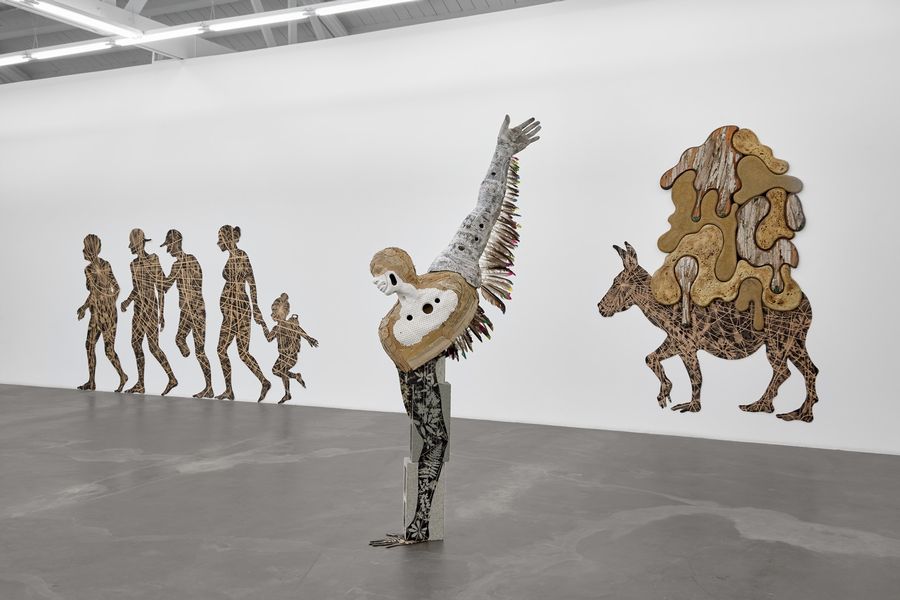
Until February 17, 2024, Luis De Jesus Los Angeles showcased Hector Dionicio Mendoza: Buscando Futuro / Searching for a Future, marking the artist’s debut solo exhibition with the gallery.
In the exhibit, Mendoza’s artwork Morir o Volar, Lalo (Die or Fly, Lalo) weighs the figure down with cinderblocks in contrapposto, lifted by open arms that shift to a weightless spread of painted feathers and carved corrugated cardboard with the figure’s head and expression, fearless, steady and focused forward.
Despite the heavy burden of the cement blocks, Mendoza skillfully captures movement and transitions in his artwork, using familiar materials to convey Lalo’s struggle, evoking empathy and admiration for the heroic figure’s determination and resilience.
The work is inspired by Lalo, Mendoza’s childhood friend and first crush, who bravely left their small town in Michoacan, Mexico, for San Francisco to escape the harassment he faced due to his queerness. In San Francisco, Lalo found the freedom to express himself authentically while still giving back to his hometown by financially supporting the opening of a tiendita, a small store.

En Mis Sueños, Yo Vuelo (When I Dream I Fly), is Mendoza’s ode to the «Dreamers,» the generation of the DREAM (Development Relief and Education for Alien Minors) Act, proposed in 2001, yet to be ratified. This legislation aims to establish a pathway to legal status for undocumented immigrants who arrived in the United States as children.
In the artwork, a hoodie-clad figure balancing on a skateboard assumes a reclined position reminiscent of a pietà, with only feathers giving hope to break the fall. The dreamer’s lower body bears the patina of ethnic bread, while the upper body is adorned with an earth-encrusted sweatshirt. Within the hoodie, a mirrored kaleidoscope featuring a peacock feather symbolizes infinite possibilities and an ongoing quest, encapsulating the dreamer’s perpetual state of limbo.
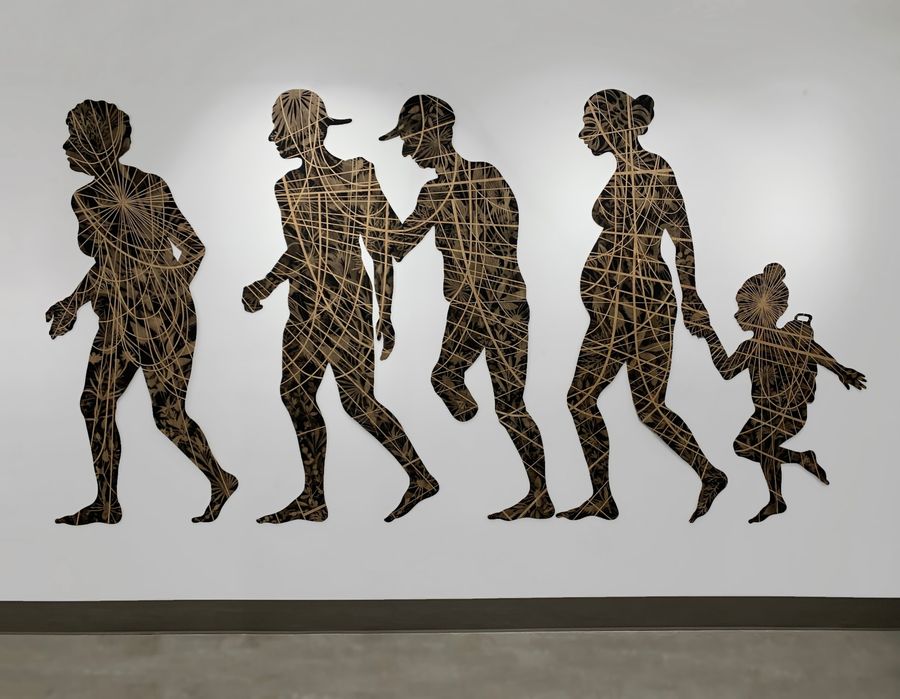
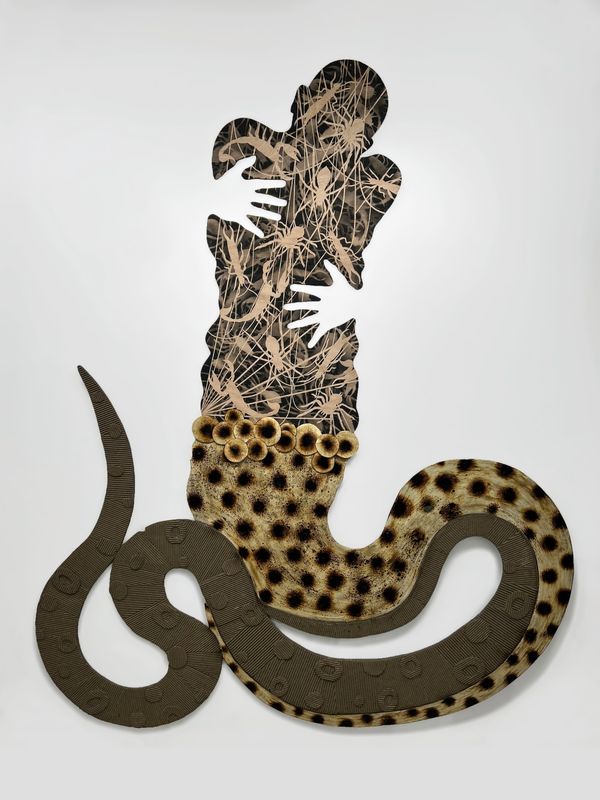
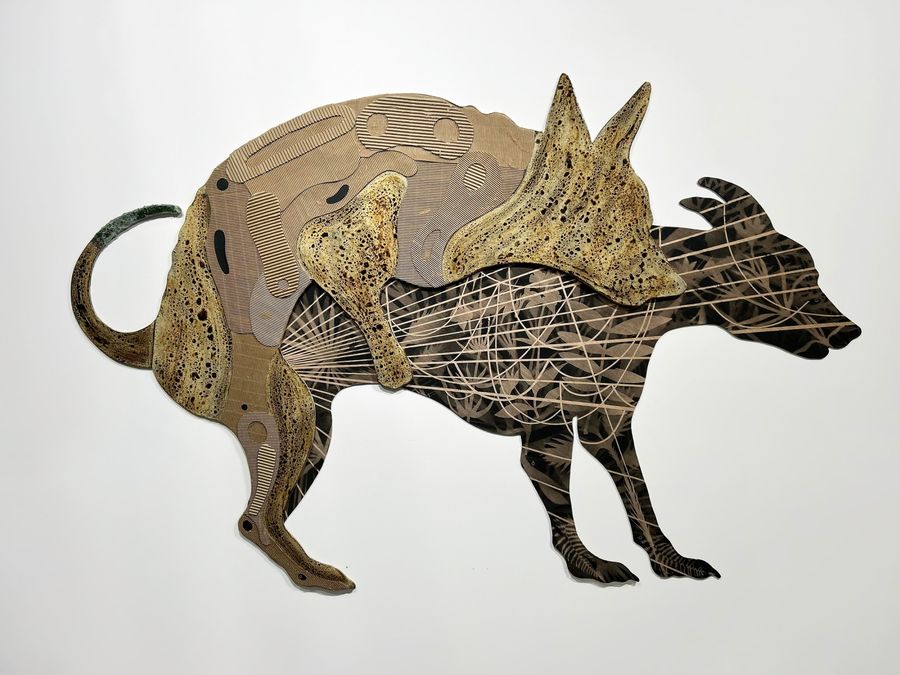
The exhibition also showcases bas-relief wall sculptures, featuring stencil-patterned plywood that Mendoza refers to as «Sombras,» or shadows, which frequently correspond to free-standing three-dimensional sculptures. One such piece, Pinche Burro, asno (Beast of Burden, jackass), presents the silhouette of a burro camouflaged by stenciled botanical motifs, which morphs into human limbs, feet, and hands, engaged in walking and carrying an abstracted load, a heavy burden made of lumps and heaps of ethnic bread, eucalyptus bark, glass, and earth.
Mendoza’s work commemorates day laborers, individuals often regarded as disposable in society, prompting reflection on attitudes toward labor, inhumane working conditions, class struggles, and social issues prevalent on both sides of the border. The recurring motif of camouflage botanicals in the series of «sombras» symbolizes landscape, healing, and protection, offering a poignant commentary on the intertwined relationship between nature, labor, and the resilience of marginalized communities.
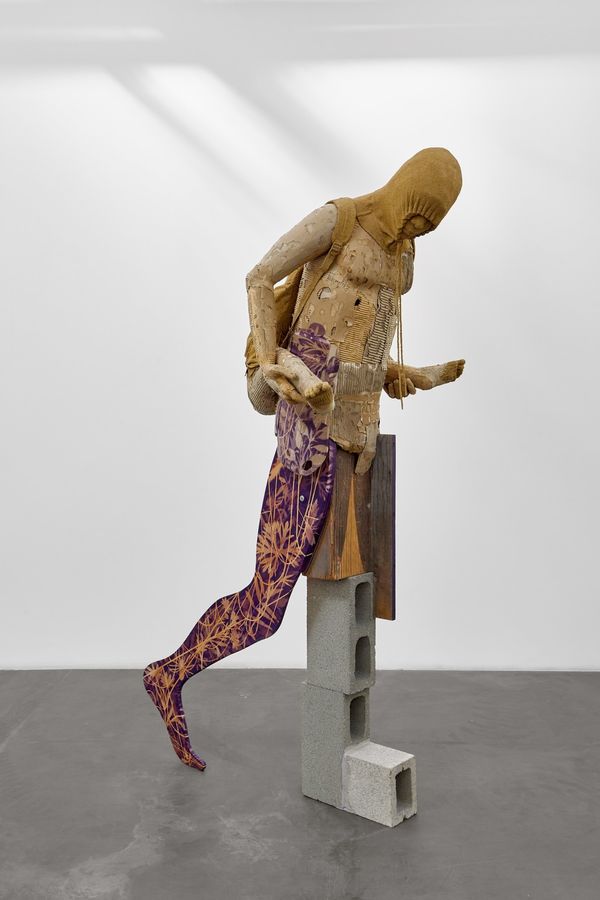

Buscando Futuro (Searching for a Future) weaves together a trove of stories and experiences to address the many uncertainties and complexities of migration, including social constructs, classism, and geopolitics that can hinder the simple right to hope.
Mendoza’s embodiment of these narratives not only provides a vehicle for representation but also fosters a space for envisioning alternative futures and engaging in critical discourse on issues prevalent within communities, including intersectional feminisms, labor rights, human rights, and LGBTQIA+ rights.
Through his use of familiar and recycled materials, Mendoza sparks the imagination of transforming the overlooked, instilling pride in one’s origins, and nurturing resilience in the pursuit of a better future.
HECTOR DIONICIO MENDOZA: BUSCANDO FUTURO / SEARCHING FOR A FUTURE
Luis De Jesus Los Angeles, 1110 Mateo St., Los Angeles, CA, USA
January 13 – February 17, 2024
También te puede interesar
Rodrigo Valenzuela:past | Present
“Past | Present”, Rodrigo Valenzuela’s third solo exhibition at Upfor, is comprised of two parts: in September, a selection of prior work from major series in photography, video and painting; and in October, the...
PATRICIA FERNÁNDEZ: HEARTBEATS
Commonwealth and Council presents "Heartbeats", an exhibition comprising Patricia Fernández’s explorations of perception and embodiment of temporality, in a year when time felt indeterminate or elastic. Hand-carved clocks and paintings of lunar calendars manifest...
Alejandro Otero:rhythm in Line And Space
Organized in partnership with the Otero Pardo Foundation of Caracas, Venezuela, the exhibition "Alejandro Otero: Rhythm in Line and Space" at Sicardi | Ayers | Bacino highlights works from his "Cafeteras" (Coffeepots), "Tablones" (Planks),...

